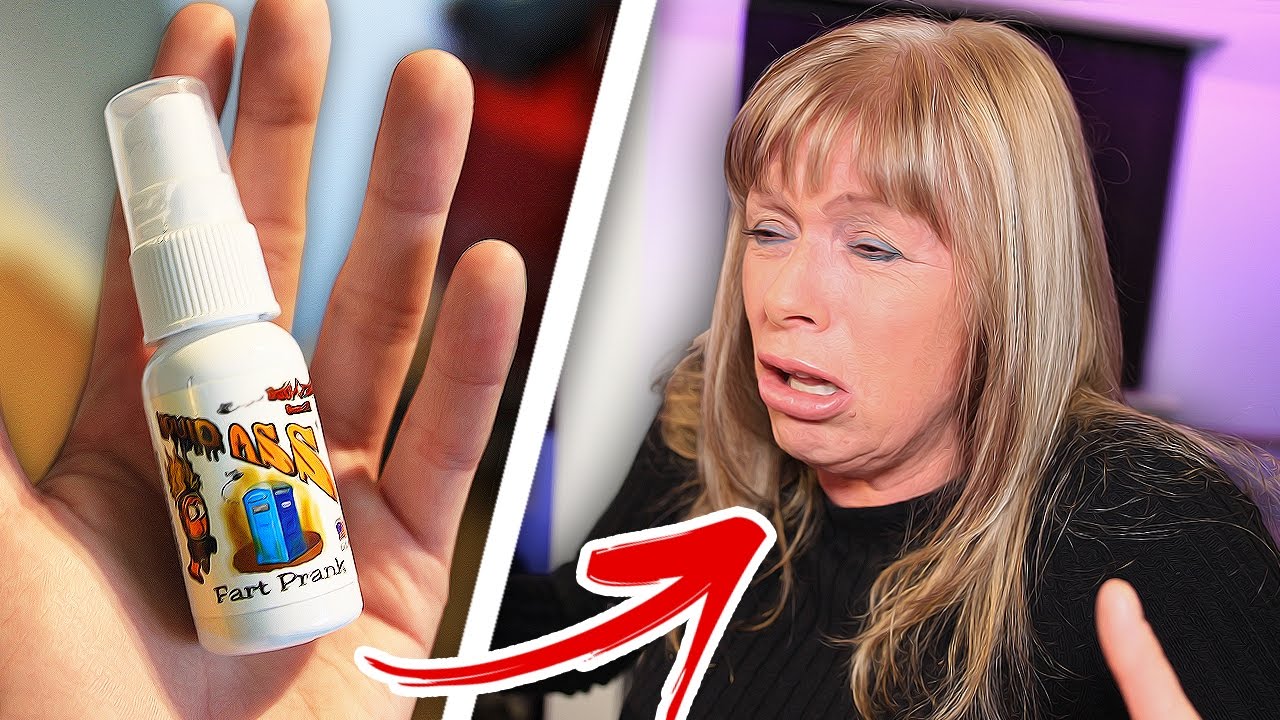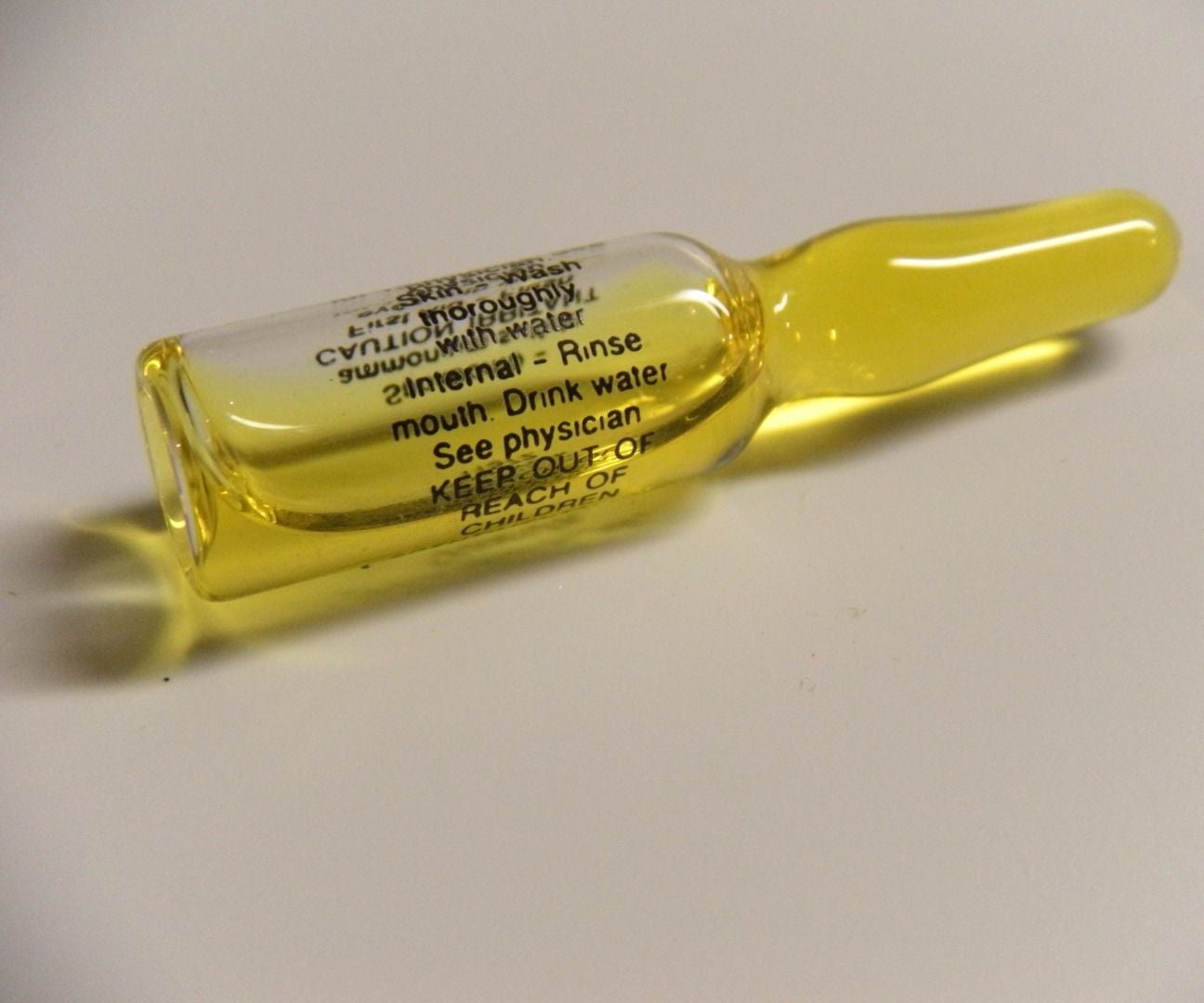

FAQs
What Makes Fart Spray Smell
Modified: August 2, 2023
Discover what makes fart spray smell and get answers to your general questions about this hilarious prank product. Unleash laughter with this stinky surprise!
(Many of the links in this article redirect to a specific reviewed product. Your purchase of these products through affiliate links helps to generate commission for Under-tec.com, at no extra cost. Learn more)
Table of Contents
- Introduction
- The Science Behind Fart Spray Odor
- Chemical Compounds Found in Fart Spray
- Skatole: The Stinky Culprit
- Volatile Sulfur Compounds: Creating That Rotten Egg Smell
- Fatty Acids: Contributing to the Pungent Odor
- Other Components and Their Role in Fart Spray Smell
- Factors Affecting Fart Spray Smell
- Conclusion
Introduction
Fart spray has long been a staple gag gift, capable of eliciting laughter and cringes in equal measure. But have you ever wondered what makes fart spray smell so foul? In this article, we will explore the science behind fart spray odor, delving into the chemical compounds responsible for its pungent aroma. Brace yourself for a fascinating journey through the world of malodorous pranks!
While the smell of fart spray may seem unique and unpleasant, its composition is rooted in scientific principles. Understanding the chemistry behind its odor can help us appreciate the complexity of our sense of smell and why certain scents evoke such strong reactions. So, let’s dive in and unravel the mysteries of what makes fart spray so stinky.
Fart spray is designed to mimic the scent of flatulence, a natural bodily process that releases gas from the digestive system. But unlike the typical gas emitted by humans, fart spray amplifies and intensifies the odor, resulting in a truly offensive smell that can clear a room in an instant. To achieve this, manufacturers incorporate specific chemical compounds that are known for their foul odors.
In the next sections, we will explore the different chemical compounds found in fart spray and how they contribute to its putrid stench. We’ll investigate the role of skatole, volatile sulfur compounds, fatty acids, and other components that combine to create the unforgettable smell of fart spray. Additionally, we’ll discuss the factors that can affect the smell, such as temperature, humidity, and the amount of spray used.
By the end of this article, you’ll have a deeper understanding of the science behind fart spray odor. So, prepare your olfactory senses for an enlightening exploration of the chemical world of fart spray!
The Science Behind Fart Spray Odor
The putrid odor of fart spray is not simply a result of a random assortment of chemicals. It is derived from a combination of specific compounds that create a distinctive smell. To understand the science behind fart spray odor, we must first delve into the fascinating world of our sense of smell.
Our olfactory system is incredibly complex. When we inhale, odor molecules bind to receptors in our nasal passages, which then send signals to the brain for interpretation. Different odor molecules trigger different receptors, resulting in various sensations and perceptions of smell.
When it comes to fart spray, the goal is to replicate the scent of flatulence, which is primarily composed of gases such as methane, hydrogen sulfide, and various volatile organic compounds. These compounds are responsible for the distinct, often unpleasant smell associated with passing gas.
Manufacturers of fart spray meticulously select a collection of chemical compounds that closely mimic the odor of flatulence. While the precise formula may vary, certain compounds are commonly found in fart sprays due to their unique and recognizable smells. Let’s take a closer look at some of these compounds and their contribution to the overall stench of fart spray.
One of the key compounds often present is skatole. Skatole is naturally produced in the intestines and feces of animals, and it carries a strong fecal odor. Its inclusion in fart spray helps to replicate the smell of excrement, adding a distinctly unpleasant element to the overall aroma.
Another group of compounds that contribute to the foul scent are volatile sulfur compounds. These compounds, such as hydrogen sulfide and methyl mercaptan, are known for their rotten egg-like smell. Their presence in fart spray helps to create that characteristic sulphurous stench that can make your eyes water.
Fatty acids are also commonly incorporated into fart spray formulations. These organic compounds, such as butyric and valeric acid, are responsible for the rancid and vomit-like smells often associated with flatulence. By adding these fatty acids to the mixture, manufacturers can capture the full range of odors found in the digestive process.
In addition to these key compounds, fart spray may contain other substances to enhance or modify the odor. Some ingredients may have more floral or chemical-like notes, adding complexity to the overall fragrance. However, the primary aim is always to achieve an intense and repulsive odor that can prank and shock unsuspecting targets.
So, the next time you encounter the unforgettable scent of fart spray, remember that the foulness you perceive is not by chance. It’s the result of a careful selection of compounds that mimic the odor of flatulence, making it a practical joker’s delight and a source of both disgust and amusement.
Chemical Compounds Found in Fart Spray
Fart spray is notorious for its repugnant odor, which is achieved through the precise combination of various chemical compounds. These compounds, carefully chosen by manufacturers, work together to create the distinct smell that can clear a room in seconds. Let’s explore some of the key chemical compounds commonly found in fart spray and their contribution to the overall stench.
One of the primary compounds present in fart spray is skatole. Skatole is a naturally occurring organic compound that is produced in the intestines and feces of animals. It emits a strong, fecal odor that is unmistakable. By incorporating skatole into fart spray, manufacturers are able to replicate the smell of excrement, adding an offensive and nauseating element to the overall aroma.
Volatile sulfur compounds also play a significant role in the foul smell of fart spray. Compounds like hydrogen sulfide and methyl mercaptan are responsible for that distinct rotten egg-like smell. These compounds are often found in decaying organic matter and are produced during the breakdown of proteins. Their inclusion in fart spray adds an intense and sulfuric note to the overall odor, making it even more repulsive.
Fatty acids are another category of compounds commonly found in fart spray. These organic compounds, such as butyric acid and valeric acid, are responsible for the rancid and putrid smells often associated with flatulence. Fatty acids are produced during the digestion process and are present in the gastrointestinal tract. By incorporating these fatty acids into fart spray, manufacturers are able to capture the full range of odors associated with passing gas, ensuring that the scent is as revolting as possible.
In addition to these primary compounds, fart spray may contain other chemicals to enhance or modify the smell. These could include aldehydes, esters, or other volatile organic compounds that contribute to the overall complexity of the odor. Some of these additional compounds may have notes reminiscent of chemicals or flowers, further enhancing the surprise and shock factor of fart spray.
It’s important to note that the specific combination and concentration of these chemical compounds can vary from one fart spray product to another. Manufacturers may experiment with different formulas to create unique smells or to achieve specific levels of pungency. However, the underlying goal remains the same: to create a smell that is foul, offensive, and capable of generating discomfort and amusement in equal measure.
So, the next time you come across the putrid aroma of fart spray, know that it is not a coincidence. It is the result of a meticulous selection of chemical compounds that work together to create a smell so potent that it has become synonymous with pranks and practical jokes.
Skatole: The Stinky Culprit
Skatole is a powerful organic compound that plays a significant role in the distinct odor of fart spray. It is a naturally occurring compound produced in the intestines and feces of animals, including humans. Skatole emits a strong and highly unpleasant smell, often described as fecal or earthy.
In fart spray, skatole is intentionally added to replicate the odor of excrement and enhance the offensive and nauseating effect. Just a small amount of skatole can create a stench that is immediately recognizable and repulsive.
One interesting fact about skatole is that its smell can vary depending on its concentration. In low concentrations, skatole has a slightly floral or sweet aroma. However, as the concentration increases, the smell becomes overwhelmingly fecal and foul. This transformation from a subtle scent to an extremely unpleasant odor is what makes skatole such a crucial component in creating the authentic smell of flatulence.
The presence of skatole in fart spray acts as a trigger for our olfactory senses. It activates receptors in our nasal passages that are specifically sensitive to this compound, leading to an immediate and strong reaction. Our brains are wired to associate the smell of skatole with feces, which is why even a hint of this compound can elicit disgust and discomfort.
It’s worth noting that skatole is not exclusive to fart spray; it is also found in other organic materials, such as certain flowers, tobacco smoke, and even in coffee. However, in fart spray, skatole is intentionally used to intensify the odor and create a smell that is both recognizable and revolting.
While skatole may be responsible for the distinctive stench of fart spray, it is important to remember that this compound is not harmful or toxic when used in small amounts. The purpose of fart spray is purely for amusement and harmless pranks.
So, the next time you encounter the notorious stench of fart spray, remember that skatole is the stinky culprit behind that authentic smell of excrement. Its inclusion in the formula ensures a full sensory experience that is sure to leave an indelible impression.
Volatile Sulfur Compounds: Creating That Rotten Egg Smell
When it comes to the nauseating smell associated with fart spray, volatile sulfur compounds are the primary culprits. These compounds, which include hydrogen sulfide and methyl mercaptan, are well-known for their distinctive scent reminiscent of rotten eggs.
Hydrogen sulfide (H2S) is a colorless gas with a characteristic odor that closely resembles the smell of rotten eggs. It is produced naturally in various processes, including the breakdown of organic matter. In the context of fart spray, hydrogen sulfide is a key component added to replicate the foul smell associated with flatulence.
Methyl mercaptan (CH3SH) is another volatile sulfur compound commonly found in fart spray. It is also notorious for its pungent odor, often described as skunky or like rotten cabbage. Methyl mercaptan, like hydrogen sulfide, is produced as a byproduct of certain biological processes, including the breakdown of organic matter in the digestive system.
The presence of volatile sulfur compounds in fart spray mimics the smell of
Fatty Acids: Contributing to the Pungent Odor
Another group of compounds that contribute to the pungent odor of fart spray are fatty acids. These organic compounds, such as butyric acid and valeric acid, play a significant role in producing the rancid and putrid smell often associated with flatulence.
Fatty acids are naturally present in the gastrointestinal tract and are produced during the digestion process. They are released when fats are broken down, and their distinct odors can be detected in various bodily fluids and waste products, including flatulence.
Butyric acid, also known as butanoic acid, is one of the main fatty acids found in fart spray. It has a strong, rancid odor, similar to that of sour milk or vomit. The inclusion of butyric acid in the formula helps to replicate the foul smell typically associated with passing gas.
Valeric acid, or pentanoic acid, is another fatty acid commonly found in fart spray. It emits a potent, sweaty, and cheesy aroma. Valeric acid, in combination with other compounds, contributes to the overall unpleasant and offensive smell of fart spray.
The presence of fatty acids in fart spray amplifies the pungency of the odor, making it even more revolting. These compounds add a distinct “rotten” dimension to the fragrance, evoking feelings of disgust and discomfort.
It’s interesting to note that the characteristic smell of fatty acids is not limited to flatulence. They can also be found in some types of bacteria and certain types of cheese. In fart spray, however, fatty acids are used in higher concentrations to create an exaggerated and highly concentrated odor.
While the smell of fatty acids may not be pleasant, it’s important to remember that they are naturally occurring compounds and are a normal part of the digestive process. In the context of fart spray, they are employed solely for the purpose of creating a powerful and realistic stench for comedic purposes.
So, the next time you encounter the pungent odor of fart spray, know that it is the result of the careful inclusion of fatty acids, such as butyric acid and valeric acid. These compounds play a crucial role in recreating the rancid and putrid smell associated with flatulence, ensuring that the prank pack a powerful olfactory punch.
Other Components and Their Role in Fart Spray Smell
In addition to skatole, volatile sulfur compounds, and fatty acids, there are several other components commonly found in fart spray that contribute to the overall stench. These components work together to create a multi-dimensional and intensely repulsive odor that is sure to elicit strong reactions.
One category of additional components found in fart spray is aldehydes. Aldehydes are a class of organic compounds that have distinct odors. Some aldehydes may have notes reminiscent of chemicals or cleaning products, adding an artificial or industrial element to the overall smell of fart spray. These aldehydes help to enhance the complexity of the odor, making it more dynamic and surprising.
Esters are another group of compounds commonly used in fart spray formulations. These organic compounds are created by combining alcohols with acids. Some esters have fruity or sweet smells, while others can have more chemical or artificial notes. The inclusion of esters in fart spray adds an additional layer of obnoxious and unexpected scents, further intensifying the prank.
Other volatile organic compounds (VOCs) can also be found in fart spray. These compounds, similar to aldehydes and esters, contribute to the overall complexity and strength of the odor. Some VOCs may have floral or chemical-like notes, while others may have a more acrid or pungent smell. By incorporating a variety of VOCs, manufacturers can create a smell that is hard to ignore and impossible to forget.
It’s important to note that the specific combination and concentration of these additional components may vary in different fart spray products. Manufacturers may experiment with different formulas to create unique smells or to achieve specific levels of pungency. However, the overall aim is always to create a smell that is foul, offensive, and capable of generating discomfort and amusement.
When using fart spray, it’s crucial to keep in mind that the purpose is purely for harmless pranks and entertainment. The intention is not to cause harm or discomfort beyond the initial shock and disgust. Therefore, while the odor may be unpleasant, rest assured that the components used in fart spray are safe for use in small amounts.
So, the next time you encounter the noxious smell of fart spray, remember that it is not just a result of a few key compounds. The inclusion of aldehydes, esters, VOCs, and other components all work together in harmony to create a truly unforgettable odor that is both repulsive and noteworthy.
Factors Affecting Fart Spray Smell
The smell of fart spray can vary depending on several factors that can influence its intensity, duration, and overall character. Understanding these factors can provide insights into how the smell of fart spray can change in different situations. Let’s explore some of the key factors that can affect the smell of fart spray.
Temperature and humidity play a crucial role in modulating the odor of fart spray. Higher temperatures can cause the volatile compounds in fart spray to evaporate more quickly, intensifying the smell and spreading it faster. Similarly, high humidity can also enhance the diffusion of odor molecules, making the smell of fart spray more potent and lingering in the air.
The amount of fart spray used also directly affects the strength and duration of the smell. Using a larger quantity of fart spray can result in a more concentrated and powerful odor, while a smaller amount may produce a milder and less enduring scent. It’s important to use fart spray in moderation and in appropriate settings to prevent overwhelming or offensive situations.
The environment in which fart spray is sprayed can also impact the smell. Closed or confined spaces can trap the lingering odor, making it more pronounced and difficult to dissipate. On the other hand, open or well-ventilated areas may allow the smell to disperse more quickly, reducing its impact. It’s important to consider the surroundings and potential consequences before deploying fart spray.
Additionally, the sensitivity of an individual’s olfactory system can influence their perception of the fart spray smell. Some people may have a heightened sense of smell and be more sensitive to the odor, while others may have a diminished ability to perceive certain scents. Cultural and personal experiences can also shape the individual’s reaction to the smell, leading to subjective differences in the perception of fart spray.
Finally, it’s worth mentioning that the specific formulation of fart spray can vary between different products or brands. The choice and combination of chemical compounds, as well as their concentrations, can create different smells or intensities. This variation means that different fart sprays may exhibit distinct characteristics, providing a range of options for pranksters and users.
Overall, the factors affecting fart spray smell, such as temperature, humidity, quantity, environment, individual sensitivity, and formulation, can all influence the experience and impact of the odor. By considering these factors, users of fart spray can better control and anticipate the reactions it may evoke, ensuring that it remains a harmless and amusing prank.
Conclusion
Fart spray is more than just a gag gift; it is a fascinating concoction of chemical compounds designed to replicate the putrid smell of flatulence. Through the careful selection and combination of compounds like skatole, volatile sulfur compounds, fatty acids, and other components, manufacturers have found a way to create an odor that is both revolting and unforgettable. Understanding the science behind fart spray odor gives us a glimpse into the complexity of our sense of smell and the ways in which certain scents can evoke strong reactions.
Skatole, with its fecal odor, adds a distinctive element to the smell of fart spray, while volatile sulfur compounds contribute to the rotten egg-like stench. Fatty acids further intensify the pungent odor, creating a rancid and putrid fragrance. Additional components like aldehydes, esters, and volatile organic compounds enhance the complexity and surprise factor of fart spray’s smell. Together, these components work synergistically to create a stench that can clear a room in an instant.
Several factors, including temperature, humidity, quantity used, environment, individual sensitivity, and formulation, can influence the smell of fart spray. Understanding these factors allows users to anticipate and control the impact of the odor. It is important to remember that while the smell may be unpleasant, fart spray is harmless and designed purely for amusement.
So, the next time you encounter the noxious odor of fart spray, remember the intricate science behind its smell. Appreciate the artful selection of chemical compounds that aim to shock and entertain. Ultimately, fart spray serves as a reminder of the fun and laughter that can be derived from harmless pranks, while offering a fascinating glimpse into the world of scent and chemistry.










